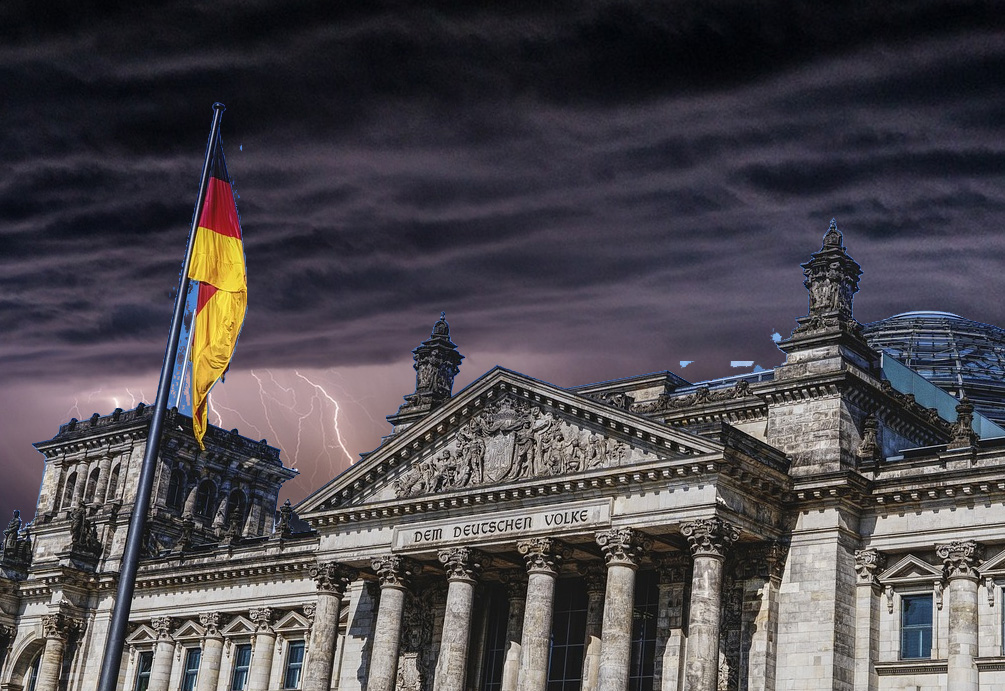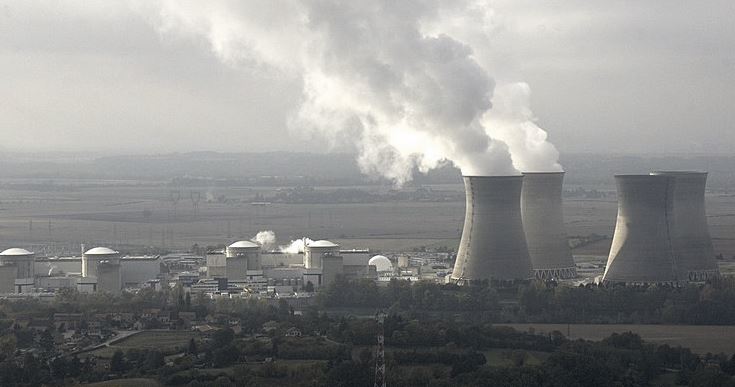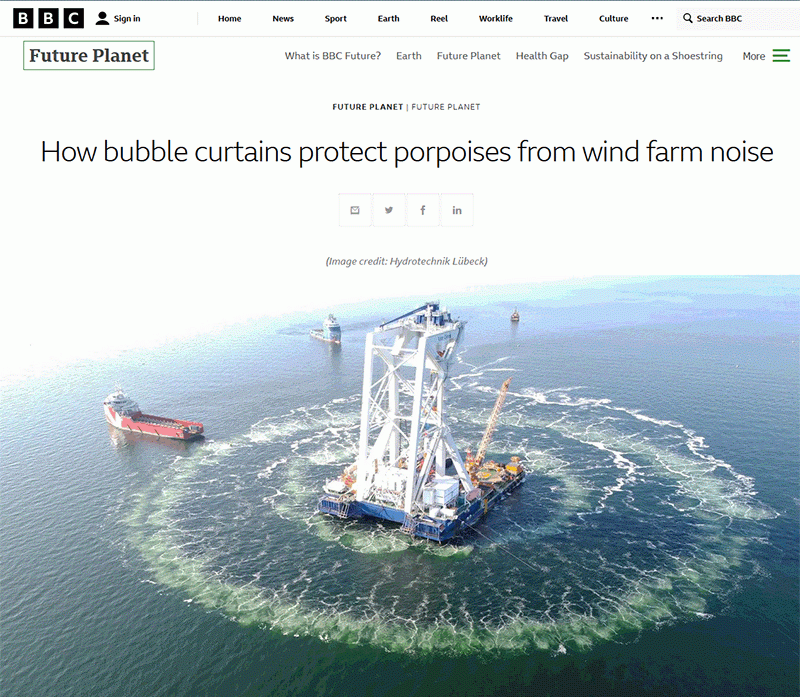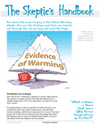|
|
||||
|
By Jo Nova For weeks a huge uprising has been building in Germany against NetZero, green tape and rampant taxes. The Germany government gave a partial concession last week, but the protests only grew stronger. Not only are the autobahns and streets grid-locked with thousands of tractors and trucks, but the freight and passenger trains have also stopped in a three day strike. Cargo boats are blocking inland waterways and canals. There is a looming strike of doctors as well, and the cluster of discontent has been labelled “Mistgabelmop ” — the pitchfork mob. Convoys are up to 20 kilometers long, and are widespread. The protests appear to be spreading. There are rumors of protests gathering in support in France. Romania, Poland, and the UK Pierre Gosselin, at NoTricksZone in Germany, writes “Never in postwar history has a ruling government been so unpopular“. The things the BBC/ABC/CBC/NPR/etc didn’t tell you on the news tonight can be found in five minutes on Twitter. Vive Free Speech. Thank you Elon. Those who control most of the Western media don’t want the unwashed masses to know about these protests because they fear the protests will spread like wildfire. “They feel like they are being ruled by people that hate them” — Eva Vlaardingerbroek The Wall Street Journal comments that “Radical environmentalists pioneered aggressive protest techniques, but they didn’t have tractors.” Despite the inconvenience, nearly 70% of the German people support the farmers. One irony, which Britain’s Just Stop Oil or Germany’s Fridays for Future lefties will be too dim to note, is that if everyone who is negatively affected by the costs of net zero starts taking to the streets, the net-zero fantasy will end in a flash. — Joseph C Sternberg, WSJ Things are so dire the German “traffic light coalition” government is thinking of using more coal. News has leaked that the German Economics Minister has shelved the old “power plant plan” which depended on gas, and is secretly planning on increasing old coal fired “reserve” power. Only in October the plan was to phase out the coal back up for next winter, but already it is clear this won’t work. –– Berliner Zeitung.
..
 Maps of the widespread protests in Germany Source …
h/t Tegenwind, Another Ian. Krishna Gans, David E, Jim Simpson, NetZeroWatch and Connor. Photos adapted from images by PayPal.me/FelixMittermeier from Pixabay and Presentsquare Presentsquare from Pixabay
With the western world hurtling into new cars that are more costly, inconvenient, slower to refuel, and prone to burning down carparks and cargo ships, it was only a matter of time before the cracks in the socialist car market started to show. Around the world tonight headlines are sharing the news that Hertz is selling off 20,000 EVs, one third of their fleet, in order to buy some more fossil fuel cars. That can’t be inspiring news for customers thinking of giving up their gas guzzlers. As Oilprice said: Hertz’s Big Move Into EVs Turned Out To Be A Dud. And as Reuters headlined: Rental giant Hertz dumps EVs, including Teslas, for gas cars. It was the perfect storm in a bad way. Apparently the customers didn’t want to rent them, and when they did and they scratched them, they cost too much to fix. (Repair costs were twice as high). Then the bottom fell out of the second-hand market, and to recover the depreciation losses, Hertz would have to raise the prices on a product customers already didn’t want. There was no way this was going to work. The official dry Hertz announcement politely says that customers want fossil fueled cars and EV’s were too expensive to fix: “..expenses related to collision and damage, primarily associated with EVs, remained high in the quarter” “The Company expects to reinvest a portion of the proceeds from the sale of EVs into the purchase of internal combustion engine (“ICE”) vehicles to meet customer demand.” Back in October 2021 it was all champagne and fireworksHertz put in an order for 100,000 EVs which was so exciting it pushed Tesla shares up 9% briefly to “a trillion dollar valuation”. (Two years later Tesla is worth 30% less.) At the time, Hertz expected to get the 100,000 cars by the end of 2022. Luckily for them, this didn’t happen. Instead they only got 50,000 by the end of 2022. This worked out to be about 11% of Some of the cars are already on the market. Two year old Telsa Model 3 EV’s are going for $22,000 US. Hertz will book a $250 million dollar loss, and stocks in both Hertz and Tesla fell on the news. With uncanny timing the Australian Albanese government is about to launch emissions standards we don’t need to coerce people to buy a product they don’t want, in the hope, they say, of changing the weather. The insanity would be hard to fathom if EV’s weren’t also the ideal tool for spying, data collection, law enforcement, and political control. Benefits that can launch a thousand political careers… Rollercoaster photo by Itai Aarons on Unsplash Tesla image by ben saida from Pixabay
They didn’t tell us, the term “fossil fuels” might be wrong tooDr Willie Soon unleashes on the failures of climate change and modern science for 40 minutes with Tucker Carlson (see below). As an opening he explained how one of Saturn’s moons has more liquid fuel than than all the oil and gas deposits of Earth, which rather pokes a hole in the idea that fossil fuels are only ever made from fossils. Essentially a frozen, lifeless moon with no dinosaurs, forests or peat bogs, somehow has lakes of methane. Not only does Titan have liquid seas of hydrocarbon fuel — but we’ve known this for years. In fact even in 2005 a NASA scientist quietly admitted that Titan had methane that wasn’t made from fossils. But where was NASA in the 18 years since? Soon explains that Titan proves that abiotic oil and gas formation is true. In 2009 an experiment showed that when methane is put under great pressure like the kind we find 50-100 miles underground, it can form more complex hydrocarbons. (Kolesnikov). Several papers in the last dozen years find more exotic kinds of polycyclic aromatic hydrocarbons all over the place, like in Titan’s atmosphere and even forming in deep cold interstellar space. (Zhao, Parker, Freissinet) They also found benzene on Mars. On his CERES sites, Willie Soon explains that in practical terms, we don’t know how much of the oil and gas on earth is made without fossils (in an abiogenic process). It could be forming 50 to 100 miles down, but we’re only drilling 6 to 8 miles deep. I seems we have little idea. Even if abiotic oil exists on Earth, it may form too slowly to be useful. Though there have been these odd claims out there for years that some oil fields are refilling. What we do know, says Jo, is that they’re not trying to understand this, and they’re not trying to tell us the whole truth either. We’ve taught two generations of children that there is one simple narrative, and if you questioned it you were an idiot. Isn’t it time a civilization dependent on these fuels had an honest discussion about where they came from? There’s a lot more in the interview about his experience at Harvard, and climate science and the sun.
Willie Soon worked at Harvard in astrophysics for 31 years but prefers the freedom to say what he thinks and to research what he wants. He co-founded CERES-Science where you can find his other latest papers. Help support Tucker’s work by joining his Tucker Carlson Network — TCN.
Thanks to all the readers who’ve mentioned abiotic oil over the years. Konrad, Garry Meyers, Bobl , theRealUniverse, Latus Dextro, OriginalSteve. William Astley, Beijing Yankee, Another Ian, Zane suggests “F. William Engdahl’s 2012 book ” Myths, Lies and Oil Wars “.”, plus Skeptical Sam and Chris (and others too).
REFERENCESKeep reading → In a radical move, the French government has quietly dropped their renewables targets from their draft energy bill, risking being seen as unfashionable losers in billionaire ski clubs. The nation that, forty years ago, built 56 nuclear reactors in 15 years has decided they just need to build another 6 to 14 new nuclear plants to reach “Net Zero” by 2050. This puts them in danger of being one of the only nations on Earth that might reach their target. This, of course, is terrible for the renewables industry as it risks exposing the wanton frivolity and utterly superfluous nature of the wind and solar subsidy farms. If France can do this without the bird chopping, the slave labor and the lithium bombs, so can nearly everywhere else. It’s a big change from 2014 when France aimed to reduce nuclear power to just 50% by 2025. As NetZeroWatch says in their email newsletter, this is a win: France drops renewables targets, prioritises nuclear in new energy billThe proposed text, which is slated to go before the cabinet early next month and then be submitted to lawmakers, reaffirms France’s commitment to nuclear power to ensure “energy sovereignty”. So France wants “energy security” as opposed to energy slavery where nations hope their enemies will be nice to them when they get cold. The proposed text affirms “the sustainable choice of using nuclear energy as a competitive and carbon-free” source of electricity, and targets the construction of at least six but as many as 14 new reactors to pull off the transition to clean energy and meet climate change goals. Climate activists (also known as renewables salesmen) are tying themselves in knots as France solves the net zero non-problem without their pet socialist technologies. “It’s a terrible step back,” said Arnaud Gosse, a lawyer specialising in environmental law. “If you only quantify nuclear power, you do not know the share of non-renewable energies. As a result, nuclear gets prioritised and, depending on remaining coverage needs, non-renewables will be the subject of floating (future) decrees. It’s no longer a mix,” Gosse said. Lord help us all, “it’s no longer a mix”, what a disaster, and a few environmental lawyers might be out of a job. In the end renewable energy is free, clean and cheaper than anything else they tell us, but somehow the government still has to force people to use it and set targets or no one will build it. The unwashed masses must be too stupid. As the World Nuclear Association points out: “France is the world’s largest net exporter of electricity due to its very low cost of generation, and gains over €3 billion per year from this.“ France is saving Germany and others from their own exorbitant experiments. Who will save Australia? UPDATE: The bottom line is that the French government is testing out the idea of dropping their renewables target. Presumably they are waiting to see how big the protest and pressure is to keep those targets. But this is an important sign that those at the highest levels of French government would prefer to ignore renewables. Photo: Spiritrespect
What looks, smells and acts like a World Government?An invisible legal cage is being built around us in full view. We know they want it. The UN keeps trying to control quarantine, vaccines and travel. They’ve been pushing for disinformation enforcement since 2021. It’s a trillion dollar business model, and lifelong sweet careers. A bureaucrat would have to be mad to say “no”. Bret Weinstein, former professor of evolutionary biology, talks to Tucker Carlson in the video below, and argues that we are in effect, living inside a coup. In May this year the World Health Organisation (WHO), a UN committee, will put forward a few modifications “to protect us all”. These harmless amendments will mean the WHO could effectively be in the room when you visit your doctor. In the event of an “emergency” foreign unelected non-representatives will decide what your doctor can and can’t prescribe for you and what vaccines you need to have, and you can’t vote them out. What could possibly go wrong? These amendments used to be called “the Pandemic Treaty” but like a shapeshifter, it now has a different name. This is part of the language battle — it’s so much harder for opposition to coalesce, or gravitate towards a moving target. It’s like wrestling with jello. Obviously, after these clauses come into force, we could get a climate or flu emergency practically any day… The Turnkey Totalitarian Planet is an invisible cage built around us:8:49| The Covid Pandemic caused us to become aware of a lot of structures that had been built around us; Something former NSA Whistleblower William Binney once described as the Turnkey totalitarian state. A totalitarian state is erected around you, but it’s not activated. And then once it’s built the key gets turned. We’re now seeing something that even outstrips Williams Binney’s description because it’s the Turnkey Totalitarian Planet. The World Health Organisation is above the level of nations, and it’s going to be in a position, if these regulations pass, to dictate to nations how they are to treat their own citizens — to override their own constitutions. So that is frightening… It’s a loophole of the mind, not the constitutionOur rights aren’t necessarily extinguished by a UN committee “treaty” but in reality people’s willingness to accept the erosion of their rights can make it a daily reality anyhow. As I have said before — A constitution is just a sheet of paper with words on it — it’s only as strong as the will of the people to fight for it is. And we have seen many times how the words have been effectively neutralized. The US and Australian constitutions both say that nothing but gold and silver coin are legal tender, but who cares? (See USA Article S10.C1.3 and Australian constitution Act Sect 114.) For two years Australians were banned from leaving Australia unless they took an approved injection. The Health Minister said this was so we could meet our international obligations — which means effectively the UN was deciding who came and went. Only idiot conspiracy theorists, of course, would suggest that the UN wants to be a World Government, but nearly 150,000 Australians were denied the right to leave the country without an injection, unless they swam or paddled across the Arafura Sea. What looks, acts and smells like a government we didn’t vote for — one that stops us getting on a plane.
Weinstein offers no exact legal quotes, which is a shame, but the difficulty of finding quotable quotes is no doubt also part of the strategy. Some of these UN amendments are unreadable — there is often no single complete sentence in sight, only grammatical warfare, with dependent clauses split across sections and articles and changes buried in appendices. The swamp of legalese can hide a crocodile and who would know? Bad writing is a crime. In May the UN World Health Organisation (WHO) will table their little amendments (for your own good). My understanding is that we have a ten month window to get our PM or President to write to the UN to opt out. For people in the US this will be decided at the election. Trump says he will terminate the Treaty. No wonder they work so hard to stop the voters getting that choice. The new conservative New Zealand Government has sensibly added a “national interest test”. UPDATE: To clarify those WHO legal requirementsThe new proposed amendments strike out the words “non-binding” with respect to WHO advice, so it’s “binding advice” now? They also strike out “with full respect for the dignity, human rights and fundamental freedoms of persons” which are apparently out-dated and dangerous terms for public health. Where the old agreement says “public health risk” that’s now going to become “all risks with a potential to impact public health” which almost certainly includes the risk of climate change, nasty language, and any discussion of the failings of vaccines or the WHO itself. See Article 3. Obviously criticizing the WHO would be “a danger to public health”. The 46 page document is loaded with layers of legal origami that are hard to unpack. But if WHO advice is “binding” and “State Parties shall implement these regulations…” and “develop and maintain capacities to implement the Regulations”, there are plenty of dangerous phrases for UN lawyers, and compliant corruptocrats to work with. Australia will be obliged to follow the WHO’s “recommendations” in relation to public health, in the event of a public health emergency such as a pandemic. We can see this in black and white in the proposed amendments to Articles 1, 13A, 42 and 43 of the IHR. Yes, it will be Australia making the decisions, but we will have given the WHO the legal authority to tell us what those decisions should be. You can argue ’til the cows come home whether that’s “ceding sovereignty” but I ask you: why would an Australian government want to put us in the position where we are legally obliged to follow the WHO’s “recommendations” in the first place, noting that the list of (binding) recommendations in Article 18 includes – but is not limited to – mandatory vaccination, isolations, medical treatment and restrictions. Now that “recommendations” are to become binding, Australia finds itself in the bizarre position of its parliament having to pass legislation in order to avoid becoming indentured to the WHO. This is a magic trick! If the UN is so smart and it’s intentions are so good, why do we need to enshrine our lack of choice into law? We could just let them persuade our elected representatives for each and every incidence instead. What’s wrong with that? Klein asks:
If it gets accepted, our only option is to exit the entire UN — and since this “treaty” is so draconian, and filled with ill intent, let’s do that anyway. Related: The WHO want digital vaccine passports.
Viv Forbes reminds us of how quickly peace can turn to war and how important energy and industrial strength suddenly was. At this point Australia has lost half the refining capacity it once had and has only about one month of diesel and petrol. In the event of something hostile stopping the supply of foreign oil, Australian planes would be grounded in a couple of weeks. After Singapore fell, fuel was in such short supply, that cars and trucks were run on charcoal burners. When copper was needed for the war effort, one smelter was repurposed with parts cobbled together in a rush from many other smelters. But Australia has closed 6 smelters in the last 20 years. Where are the spare parts and spare expertise to reindustrialize if and when we need it? Instead we ship off ore and hope the nice people at the other end send up back the things we need, while we build unreliable generators like talismans to weather Gods in the hope the world, apparently, won’t see as a climate pariah. The patsies quake at the thought of being “left behind” in a race to nowhere, while another nation burns half the coal in the world, will soon have the largest fleet of nuclear power plants and builds the largest navy. As net zero strangles Australian industry, Australia is becoming green, powerless and defencelessBy Viv Forbes History holds lessons which we ignore at our peril. Japan was opened to trade with the US in the 1850’s. They were daunted by the naval power of Britain and the US but were determined to catch up. In the 1930’s Japan attacked China, Mussolini attacked Ethiopia and Hitler planned how to avenge WW1 in Europe. Britain’s PM Chamberlain negotiated with Hitler and proclaimed he had achieved “Peace in our Time”. But Churchill warned: “Britain must arm. America must arm. We will surely do it in the end but how much greater the cost for each day’s delay.” In November 1938, just after the signing of the Munich Pact, John Curtin (Leader of the Labor Party in the Australian Parliament), made this statement: “. . I say that any increase in defence expenditure appears to be an entirely unjustifiable and hysterical piece of panic propaganda.” Source: Hansard, p1095, Nov 2, 1938. Just ten months later, in September 1939, Germany attacked Poland. On this side of the world, the Japanese built a large navy and air force. However the Americans, British and Dutch controlled Asian oil supplies needed for trucks, tanks, ships and planes. With Britain pre-occupied with Germany and Italy in Europe, Japan decided on a huge grab for land and resources. In 1931 Japan occupied Manchuria and by 1937 Japanese troops were attacking Chinese soldiers outside Beijing. Japan invaded French Indochina in 1940 and a large Japanese force threatened the Philippines where US General Douglas MacArthur was based. On Monday 8 December 1941, Australian PM Curtin was told that Japanese aircraft had attacked the large US Pacific Fleet at Pearl Harbour and US bases in the Philippines. Three days later, two “invincible” British warships, “Repulse” and “Prince of Wales” were sunk by Japanese planes off Malaya. Soon Japanese armies were rampaging through Asia towards Australia. In December 1941 Hong Kong fell. By Feb 1942, the British fortress of Singapore surrendered and Japanese bombs were falling on Darwin. By Sept 1942 the Japanese army had slashed their way down the Kokoda Track across Papua New Guinea. They could see the lights of Port Moresby and were looking across Torres Strait to Australia. Further south, five Japanese submarines were snooping in the seas off Sydney harbour. Two midget submarines entered the harbour and one sub sank HMAS Kuttabul. The Japanese navy later bombarded Sydney and Newcastle. By that time, most of Australia’s trained soldiers were fighting Rommel at Tobruk in North Africa or were in Japanese prison camps. Australian politicians discussed the infamous “Brisbane Line” – surrender of Australia north of Brisbane. Keep reading → By Jo Nova Now they tell usWind farms save the world, and absolutely do not hurt dolphins or whales but did you know the industry has developed bubble curtains to protect porpoises hearing from the things that never harm them (isn’t that nice of them)? Bubble curtains are being “widely” used in Germany, Denmark and the Netherlands. The BBC is happy to report it now there are good results from a study, but apparently they weren’t too enthused in 2013 about telling us how pile -driving during construction can permanently destroy hearing in marine mammals. Indeed, ocean noise is such a problem the pile-driving teams use acoustic deterrents — loud noises designed to scare marine life away before they get started on the industrial noise. But even the “safety warning” may itself be dangerous. So that’s alright then, windfarm construction used to kill porpoises, and the BBC kept that a secret, but now that we’ve solved it, it’s news we can use, right? “Like a giant jacuzzi.” How bubble curtains protect porpoises from wind farm noiseAs huge offshore wind farms spread across Europe’s North and Baltic seas, efforts grow to buffer the impact on wildlife.
The original pile-driving in that study was actually done around 2009. If intrepid investigators from the BBC cared about marine life for real and investigated, they could possibly have reported it 14 years ago and before another 4,000 wind turbines were hammered in to the sea floor. Do dolphins matter or don’t they? It appears the BBC only mentioned underwater noise pollution once before in 2018, and the one reference to a windfarm was buried in a list of other industrial sources of noise. There were no headlines “Windfarm construction kills porpoises”. If coal miners used pile-drivers and was killing dolphins, the BBC would headline it and then repeat it until children at school were signing songs about it. But those wind farmers are the nicest guys designing these jucuzzis just for porpoises:But the mid-air bird slicing will continue.
How many porpoises were deafened and left to die wandering the ocean blindly before the bubblers began?
The BBC propaganda team doesn’t think to ask when they started using the bubble walls:
It only took the BBC ten years to mention the Dähne study of 2013: At close range, pile-driving noise can cause temporary hearing loss or even permanent deafness in harbour porpoises, leaving them disoriented and unable to survive. There can also be indirect damage. A 2013 study of pile-driving during the first offshore wind farm built in the German North Sea found that the noise prompted harbour porpoises to flee the area, swimming more than 20km (12 miles) away. Harbour porpoises need to eat and hunt almost constantly to meet their energy needs. Fleeing over long distances can disrupt that vital activity and make them vulnerable to starvation. Seals may be similarly affected. Harbour Porpoises have been having a hard time in the Baltic Sea. At least one mammal experts suggests they are dying awfully young: Siebert points out that while porpoises can generally live for more than 20 years, in the Baltic Sea the average life span for females is just under four years, and in the North Sea, just under six years. “The animals in our waters die far too early,” she says. Where is Greenpeace when a porpoise needs them? REFERENCE Michael Dähne et at (2013) Effects of pile-driving on harbour porpoises (Phocoena phocoena) at the first offshore wind farm in Germany, Environmental Research Letters, Volume 8, Number 2, DOI 10.1088/1748-9326/8/2/025002
People say things in a car they might never write in an email. Well, they used to.Who knew? The Subaru privacy policy allows them to record your conversations and your face and sell that data to the highest bidder. Most likely (who reads these things) all the other car companies do too. When an AI analyzes it, presumably it will identify your voice (and you from the cameras). Anything you say in the public broadcasting world of private cars will belong to them, even if you are a passenger, and were never asked. So if you want to have a private discussion about your political views, your children, your religion, troubles at work, intellectual property, discoveries, information that might affect stock prices, your thoughts on immigration, corruption, or mention any medical issues you have, or affairs anyone you know has had, don’t do it in an electric car. Imagine the blackmail, political, legal and insider potential with this data in the hands of… “Subaru“, posted on Foundation MozillaHere’s something you might not realize. The moment you sit in the passenger seat of a Subaru that uses connected services, you’ve consented to allow them to use — and maybe even sell — your personal information. According to their privacy policy, that means things like your name, location, “Audio recordings of Vehicle Occupants”, and inferences they can draw about things like your “characteristics, predispositions, behavior, or attitudes.” Call us bonkers, but we don’t think that simply sitting in the passenger seat of someone’s Subaru should mean you consent to having any of your personal information use for, well, pretty much anything at all. Let alone potentially sold to data brokers or shared with third party marketers so they can target you with ads about who knows what based on the the inferences they draw about you because you sat in the back seat of a Subaru in the mountains of Colorado. We’re gonna really call out Subaru for this, because they lay it out so clearly in their privacy policy, but please know, Subaru isn’t the only car company doing this sort of icky thing. Subaru also admit that when the information is transmitted they cannot guarantee that it will not be intercepted, only that they will do their best to look after your info after they receive it. To opt out: It seems the best way to keep Subaru from collecting, sharing, or selling your data to people who want to sell you stuff or data brokers or law enforcement, your best bet is to never buy, drive, or ride in a Subaru. Except if you’re walking on the street when a car with exterior cameras or sensors drives by. Then you might get caught up in that data collection too. So, yeah, the point is, you really don’t have many great choices when it comes to protecting your privacy from connected cars these days, other than to never buy them, drive them, sit in them, or exist on the street when they drive by. h/t to Sharper |
||||
|
Copyright © 2025 JoNova - All Rights Reserved |
||||




















Recent Comments